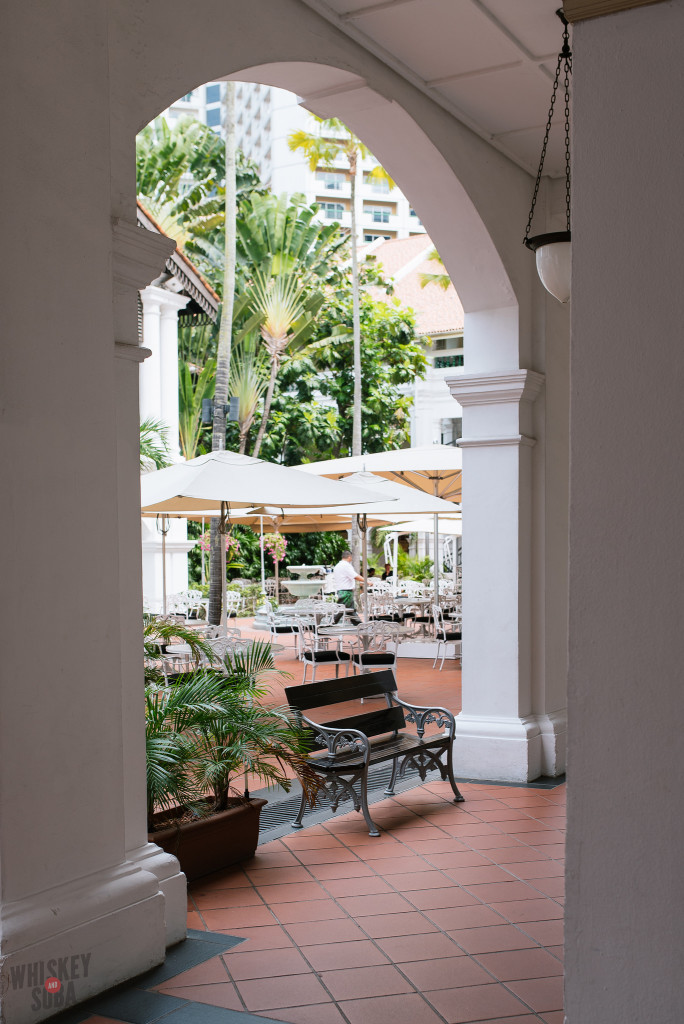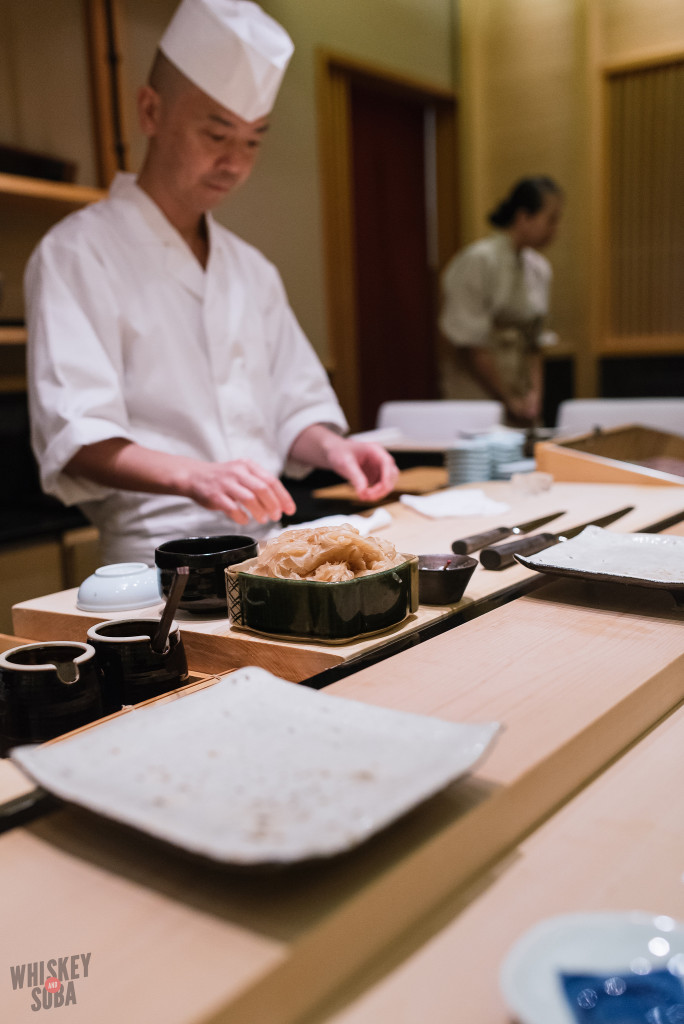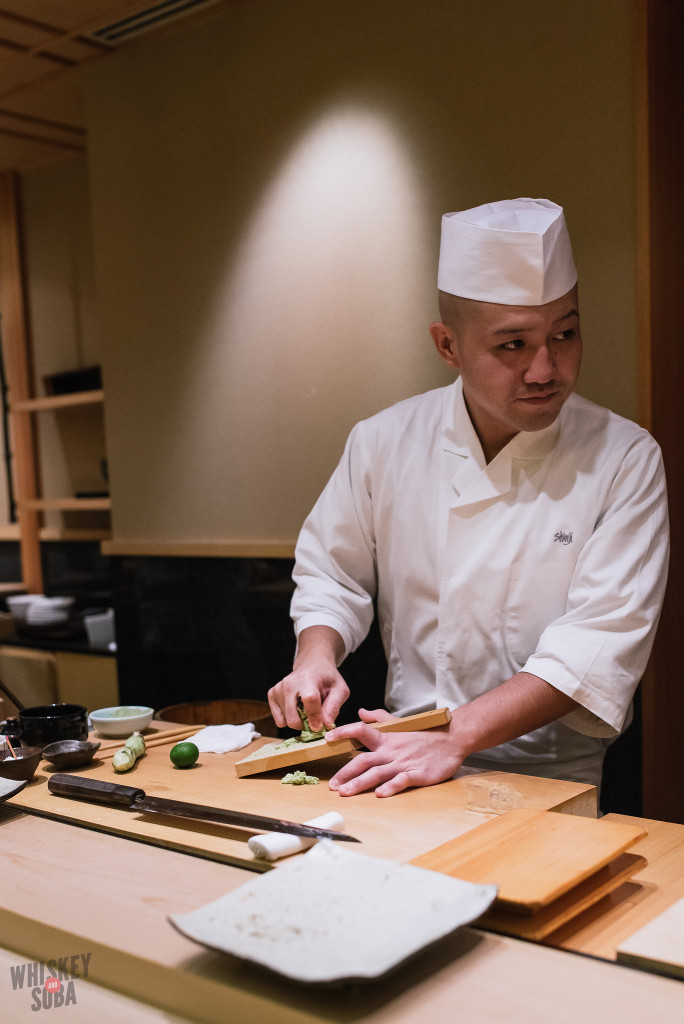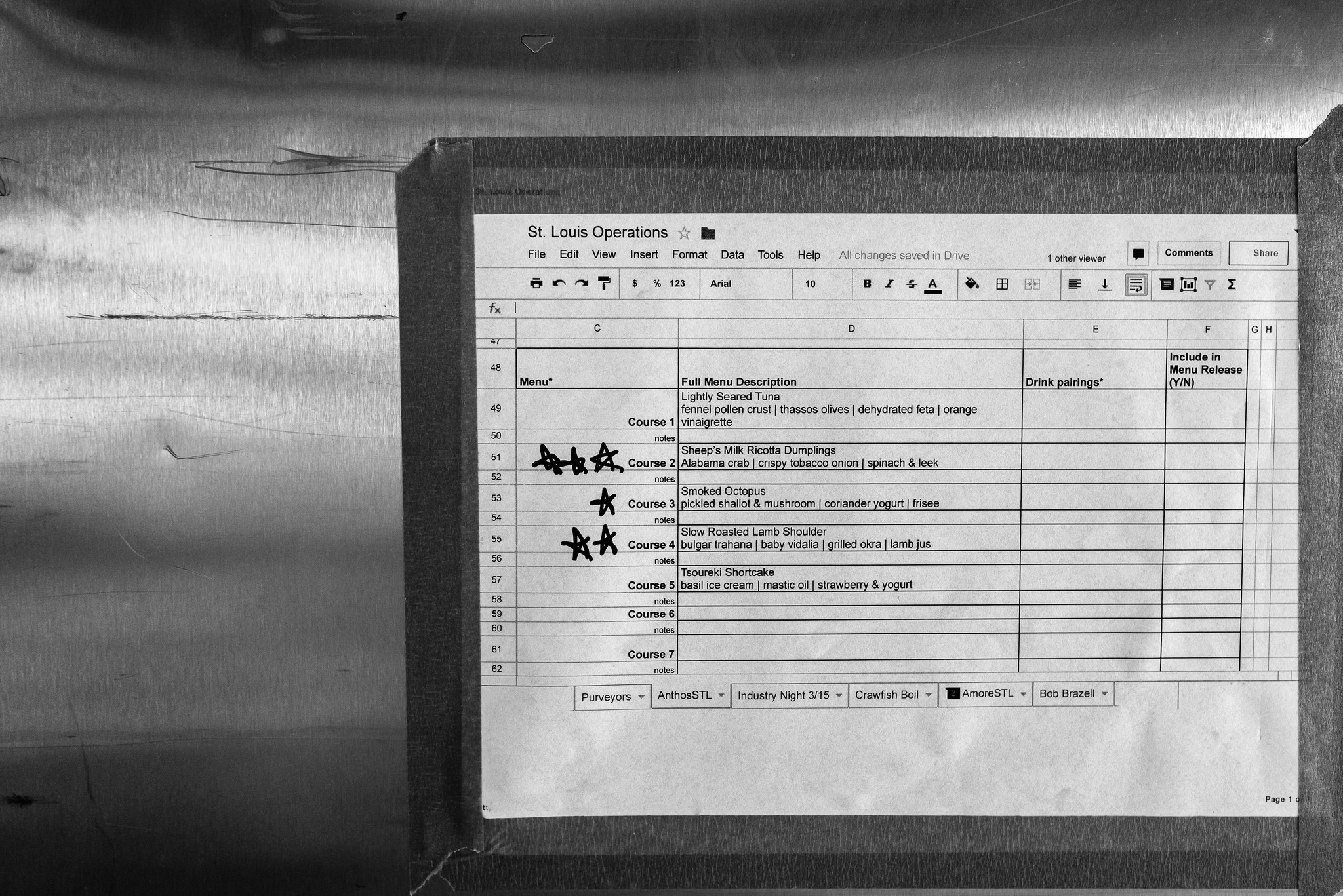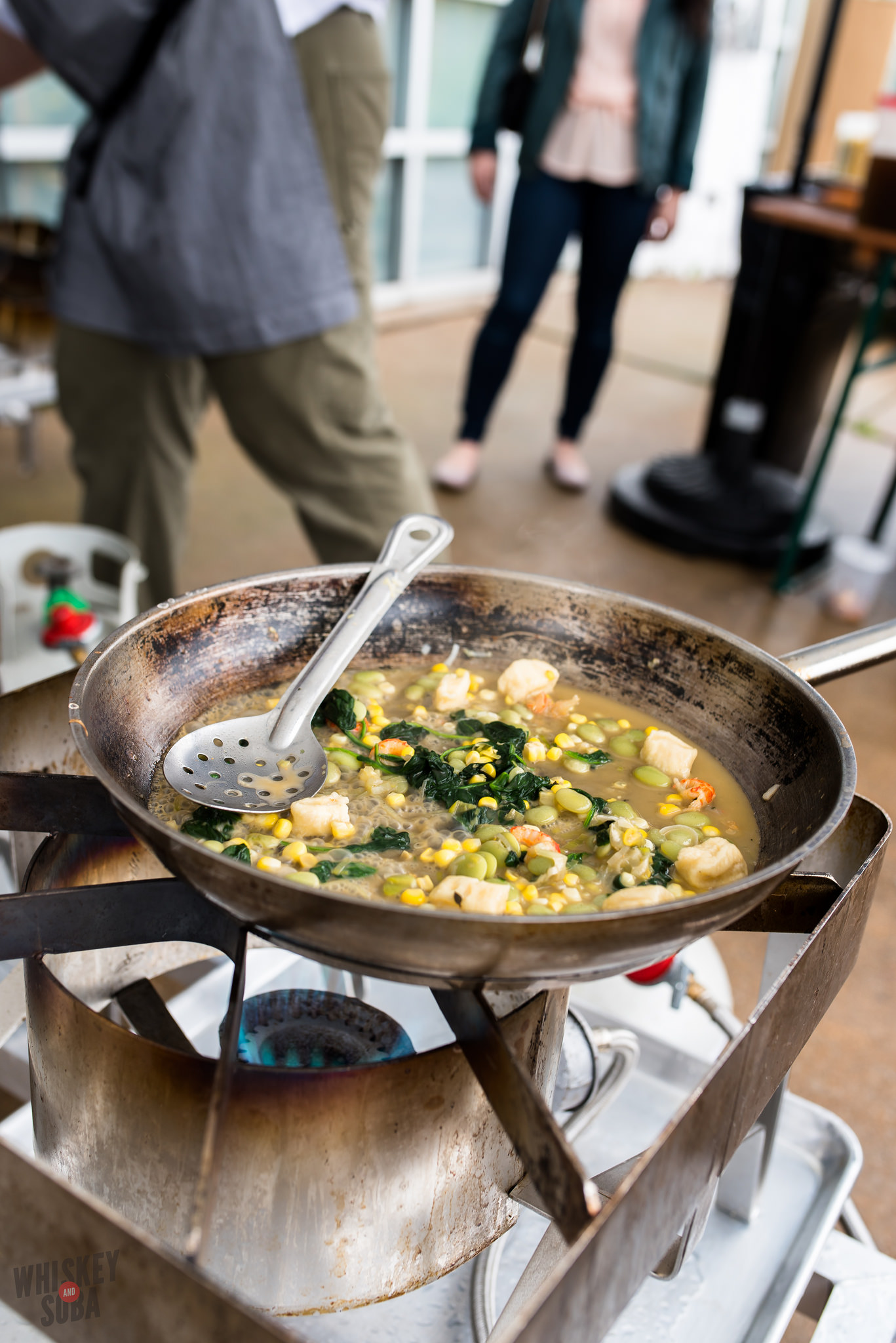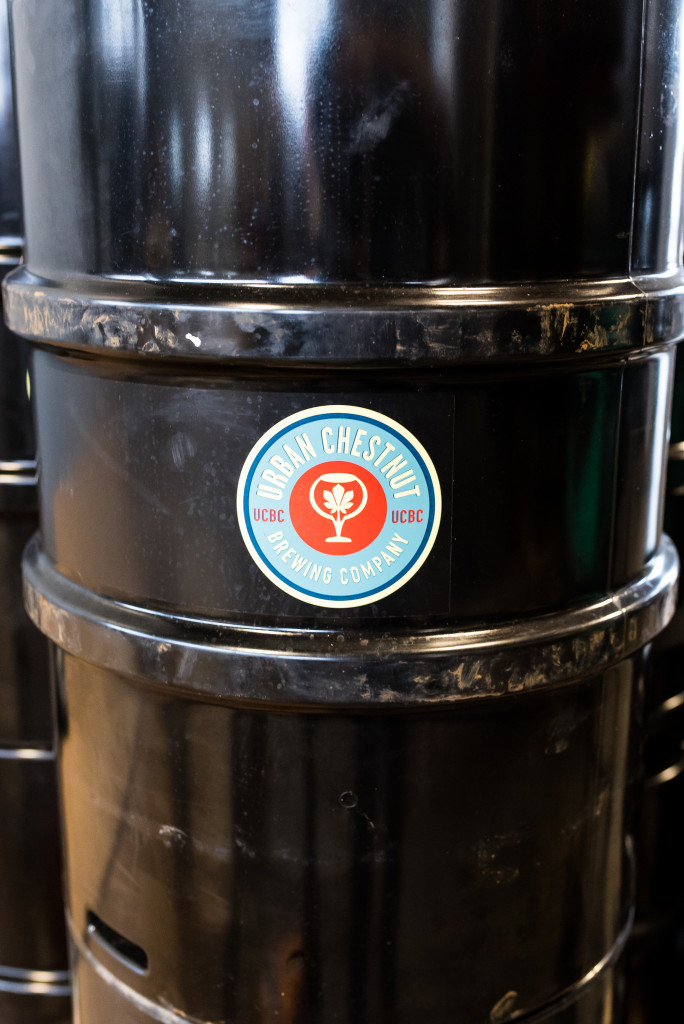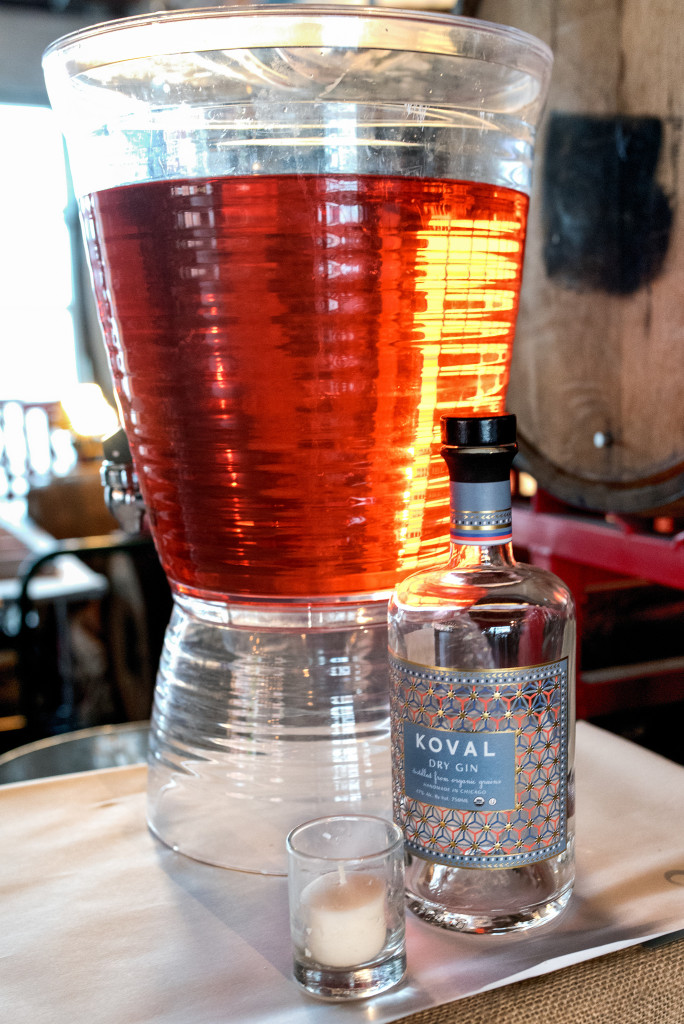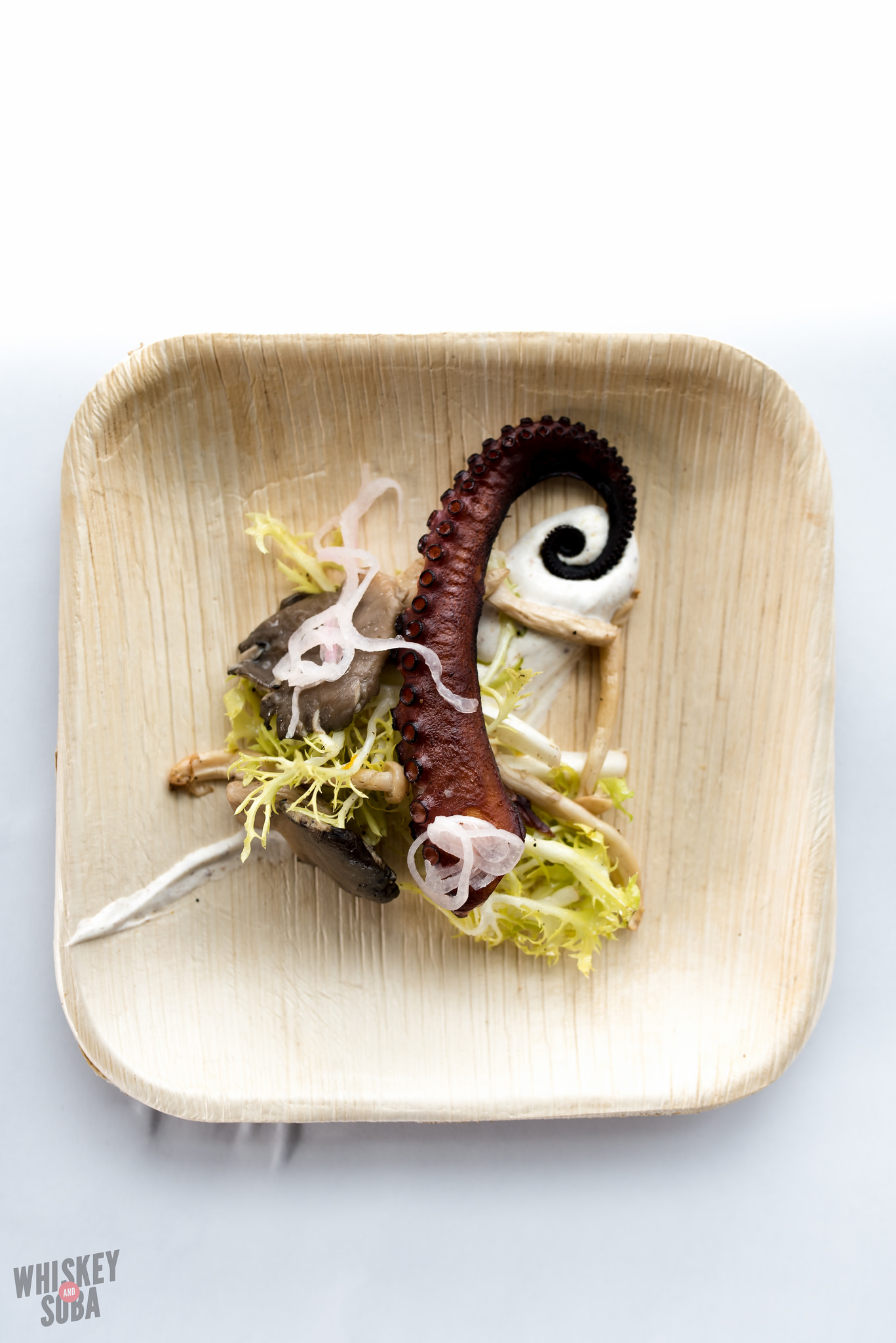Stuff to eat. Mostly around St. Louis.
Shinji by Kanesaka
A stark white colonial complex stands in the center of Singapore's downtown, surrounded by modern monoliths and heavily trafficked roads. The Raffles Hotel, built in 1887, is one of the world's finest and remains the gold standard for Singapore - if you're visiting and looking to spend $700+ a night, look here, not the Marina Bay Sands. Raffles also seems to be the inspiration for every Singaporean hotel that came after it: construct a beautiful building with fantastically modern accommodations, then fill the empty spaces with high-end stores, fine dining, and lush landscaping. Walking into the lobby is a bit like the first time you see The Grand Budapest Hotel's interior; you get transported to another time and another place. And if you're not a guest, like me, you get transported back outside.
Gold Elevator at The Raffles Hotel Singapore
Courtyard at The Raffles Hotel Singapore
I'm hesitant to recommend this, but if you visit Singapore, go to The Long Bar the hotel. The Long Bar is most definitely a tourist trap - the people you see in there are more than likely the same people who will be dining at the Clarke Quay Hooter's that night - but it has a very cool Malaysian plantation design to it. This is the place where the sickly sweet Singapore Sling was invented, but that doesn't make it any better. I'd rather stop in for a beer or bourbon than get a $30 cocktail that tastes like hummingbird food.
Lights at The Raffles Hotel Singapore
Directory at The Raffles Hotel Singapore
Choosing where to spend my limited meals in Singapore is a challenge; this is a city with 10 fine-dining establishments on the Asia's 50 Best Restaurants list, plus an insurmountable number of wonderful local restaurants and hawker stands. I've agonized over menus, my mind a barrage of haute cuisine and fine ingredients.
Table Settings at Shinji by Kanesaka
The first of my splurge meals was at Shinji by Kanesaka at Raffles. Shinji is the Singapore outpost of Shinji Kanesaka's 2-Michelin starred Tokyo restaurant. Kanesaka's executive chef is Koichiro Oshino; I was lucky enough to have him as my chef during my meal there.
A little too confident in my ability to cope with the Singapore heat, I arrived at Shinji drenched in sweat, dehydrated, and possibly suffering from a little heat stroke. Walking through the lattice door into the restaurant - which is just a small room with a bar wrapping around the 3 sushi chefs - felt like something out of a movie. As the door slid closed behind me, the oppressive heat, the bustle of the city, the stark white walls of the colonial hotel, dissipated. Within 5 minutes I was transferred from 2015 Singapore to early-1900's luxury to a cozy Tokyo restaurant.
I sat between Oshino-san and another sushi chef, watching them prepare for service as I cooled down. I originally intended to get the Tsuki lunch set (12 pieces, $125), but I ended up going with the Hana (9 pieces, $75) due to my internal organs shutting down.
Ginger at Shinji by Kanesaka
Chef at Shinji by Kanesaka
The meal began in near total silence, as other diners had not yet arrived. Oshino-san welcomed me, asked me if there was anything I didn't eat (no), and we began. I was given a bowl of thinly sliced daikon (radish) dressed with a ginger sauce and seaweed in a light sesame sauce. A simple starter and palate cleanser.
My descriptions for the sushi itself will be minimal. Shinji's focus is on balance, harmony, and honoring the ingredients. We didn't speak much during the meal; it was more like watching a movie or play than anything else. For many of the dishes, it's simply a piece of fish dabbed with soy.
Something that sets apart a great sushi place from the average is the rice. This cannot be emphasized enough. The slight vinegar flavor, the perfect temperature and texture; it was the best sushi rice I can remember eating anywhere. The more obvious difference is the quality of fish, all of which is picked by Kanesaka himself at the Tsukiji fish market in Tokyo, then shipped to Singapore.
The first piece of sushi was Suzuki (sea bass), followed by Ika (squid). The squid was cut so thinly you could see the dab of wasabi through it. When editing the photos, I had to lower the white level of the squid - it was so white, it nearly disappeared over the plate and rice.
Sea Bass at Shinji by Kanesaka
Squid at Shinji by Kanesaka
Sushi Making at Shinji by Kanesaka
The most beautiful piece of the meal goes to the Chu-toro (medium fatty tuna), though the otoro (fatty tuna), the most highly-sought after piece of tuna, trumped it in flavor. It melts in your mouth like butter.
Chu toro tuna at Shinji by Kanesaka
Otoro Tuna at Shinji by Kanesaka
Kuruma ebi (Japanese Tiger prawn) made a striking appearance on the plate, but was my least favorite piece. I couldn't discern anything particularly special about it; I would have greatly preferred uni. The negitoro (tuna with spring onion), on the other hand, may have been the bite of the night. The fatty tuna was chopped and tossed with thin slices of onion, creating a balance of soft and crisp, fatty and sharp.
Prawns at Shinji by Kanesaka
Continuing with the tuna theme was marinated maguro (tuna), a ruby cut of fish that had been marinated in soy.
Tuna Slicing at Shinji by Kanesaka
Glazing Tuna at Shinji by Kanesaka
Tuna Sushi at Shinji by Kanesaka
Anago (saltwater eel), compared to unagi, is fishier, the texture more fragile and flakey. I would have preferred uni. I'm really sad I didn't get uni. After the anago came Aji (horse mackerel) and Suimono (clear soup). My body was still cooling down at this point, so I didn't eat much of the hot soup
Anago at Shinji by Kanesaka
Soup at Shinji by Kanesaka
Glazing Sushi at Shinji by Kanesaka
My last piece of sushi was tekka maki, a simple tuna roll. It was served with pickles and, without question, the best tamago (egg) I've ever had. Unlike the more traditional tightly folded tamago, this was an egg custard that had been set. One of the goals I'm setting for myself is figuring out how to recreate it; it had enough sweetness and creaminess that it would be paired with a dessert.
Tekka Maki Prep at Shinji by Kanesaka
Tekka Maki, Egg at Shinji by Kanesaka
The meal closed with a dessert that, like the sushi, appeared simple, but packed a wallop. The pumpkin pudding was incredible. The pudding itself was a mix of vanilla and pumpkin, topped with toasted pumpkin seeds and a sweet pumpkin sauce. At the base was pureed pumpkin.
Pumpkin Pudding at Shinji by Kanesaka
The meal was sushi at its purest, but this was one of those that I'll remember more for the experience than the food. There's no doubt the sushi is world class, it's just that I want more complexity when I eat. That's why I love Niche, Sidney Street Cafe, and Publico back in St. Louis; I like to get a plate that makes me wonder "how did they do that?" or "how did they think of that?" For me to fully enjoy Shinji by Kanesaka and to fantasize about going back would require me to do the $250 omakase, I think. Still, I'm glad I went.
This restaurant has moved.
#02-20 Raffles Hotel
1 Beach Road
Singapore 189673
+65 6338 6131
Dinner Lab: Anthos
The last time I saw Russ Bodner was in mid 2003 when he graduated from my high school, headed off to study accounting at Indiana University. Imagine my surprise when, in early 2014, Russ and I reconnected and I found out that he was some big fancy chef down in Alabama. We started talking fairly often about all things food related, one of which was his fondness of pop-up restaurants. Eager to try his food and an avid fan of Dinner Lab, I put Russ in contact with some of the Dinner Lab crew and voila: I present Russ Bodner's Anthos - Greek Interpretations from a Lost Restaurant. The evening's meal took place at the midtown Urban Chestnut, which is probably my favorite out of all the venue's they've used so far. The size was right, the beer barrels all around created an industrial atmosphere, and it was connected to a bar for post-dinner drinking.
Russ' career has taken him from NYC (Anthos) to Alabama (Springhouse, Kowaliga) to Colorado (Aspen Mountain Club) and now, possibly, back to St. Louis.
How did you pick the name for your dinner?
The very first restaurant that I worked at was Anthos, and I loved the food that we were doing. Unfortunately, they've since closed. I've taken some of my favorite items we did there and put my own spin on them for this dinner.
Did you have a favorite Mediterranean dish or restaurant in St. Louis? We don't have too many here...
I didn't have a favorite in St. Louis growing up. It was all in the kitchen at Anthos. They were doing "new-age Aegean", something that I found fascinating and unique.
How'd you pick the five dishes for this menu? I'm sure you have an arsenal of dishes at your disposal.
I knew that when I did a dinner in St. Louis, I wanted a fish-centric menu. I played around with doing a Southern progressive line up, but the Mediterranean won out this time!
On his way up to St. Louis from Alabama, Russ stopped by some of the farms he used to frequent during his Springhouse/Kowaliga days to get some fresh seasonal ingredients, including fresh lima beans, corn, baby Vidalia onions, and okra.
You come to St. Louis every few years and eat like a horse - where were you most excited about trying this trip?
I was most excited to check out Publico. It's in my old neighborhood.
What are some standout dishes you've had in town?
My absolute favorite dish I ever had in St. Louis was a carrot dish at Niche when it was on Sidney Street. I also loved the pig tails at The Libertine and the lamb heart at Publico.
I know you're looking to open a restaurant here. Do you have a concept in mind?
I have a few ideas in my head, but I will keep them close to the chest for the time being. I would love to do something that is different and not in St. Louis.
What are your favorite and least favorite ingredients to work with?
The tomato - for both. When the heirloom tomatoes are in season, I don't think there's anything better. But during the off season, there's almost nothing worse.
What's the most memorable meal you've had as a diner?
I'm not sure if this counts, but a few years ago, I was at an event in Virginia at Border Springs Farm. Craig Diehl and Bob Cook from Charleston were in charge of doing the dinner that night. Craig boned out a whole lamb, rolled it and slowly roasted it on a spit. He also slowly smoked and then grilled a skin-on pork belly. Both of the meats were so incredible, I can't even remember what the vegetables were!
If there is one dish of yours that would define your career so far, what would it be?
As far as a dish that got the most recognition, it would certainly be the catfish tacos I made when I opened Kowaliga Restaurant in Alabama.
Each course had an Urban Chestnut beer pairing. My favorite was the pairing of their Russian Imperial Stout Thrale's with dessert. The beer has a sour cherry and coffee taste, but man, it was a heavy, heavy beer. I'm not man enough to take down an entire bottle myself. Koval provided the house cocktail, a powerful gin and maraschino mix that would have rendered me useless if I had more than one.
Russ' first course was a lightly seared tuna with a sweet and intense fennel pollen crust. Celery leaves, radishes, Thassos olives - an oil cured olive from Thassos with this amazing ripe olive flavor, and dehydrated feta were sprinkled around the dish, along with a bit of orange and orange vinaigrette. The flavors were distinctly Greek, but unlike anything I can remember having before.
Russ is doing the same menu at Dinner Lab Houston; this dish was so good, I thought about going down to get it again. Then I weighed this dish versus having to actually be in Houston and decided it wasn't worth it.
His second course - and the most popular entree of the evening - were Sheep's Milk Ricotta Dumplings. I'm not sure anything about this dish was Mediterranean aside from the little pillowy dumplings, but it was outrageously good. Give me a Southern American + Greek restaurant! Russ cooked the crawfish in a crawfish stock with the lima beans and corn, then topped it with tobacco onions.
The result reminded me of something my grandma would have cooked when we were younger. Fresh, hearty, probably more unhealthy than it looks. I would happily, joyously pay for this at a restaurant.
This was the controversial dish of the evening, as octopus tends to be. Due to issues with the oven, some of the smoked octopus was undercooked, resulting in a chewy bite of seafood. I guess I was lucky, because my piece was tender. The octopus' smoked flavored was complimented by pickled shallots and mushrooms and subdued by coriander yogurt.
Lamb shoulders were donated from Border Springs Farm in Virginia, then slow roasted until it was time to serve. Like everyone worthy of your trust, I love nothing more than the taste of slow cooked, smoked meat. Seeing these lambs come out of the oven, I contemplated taking one and leaving, tearing it apart and eating it handful by handful like they serve it at Kapnos in D.C.
What you can't see in the pictures is the bulgar trahana, which tastes like grits and bulgar made a baby. The bulgar is cooked with dairy, resulting in a creamier texture and milder flavor. The red sauce you see at the bottom is a homemade harissa, also incredibly tasty. I will be going all Zero Dark Thirty on Russ to get that recipe. Grilled okra and baby vidalias rounded it off. If forced to pick 3 dishes from the meal to eat again, it'd easily be the tuna, dumplings, and the tsoureki shortcake with basil ice cream. Sweet desserts do about as much for me as monogamy does for Don Draper. They're wasted on me. This, however, was not. The tsoureki has mahlab, a spice made from cherry pits, giving it an almondy, nutty hint. On top of that was a thin layer of the piney, sappy mastic oil, then sweetened yogurt, strawberries, and finally, the basil ice cream.
The ice cream was on the same level (or maybe even higher...) than Anne Croy's basil gelato at Pastaria. You could tell looking around the room that this dessert was a home run. People stopped talking and just focused on eating as much as the could as quickly as they could, then trying to figure out who around them wasn't going to finish theirs.
Russ' Dinner Lab gave St. Louisans food that they can't find here otherwise. His love of Greek cooking combined with years in the South have left him with a unique voice in the culinary world. I hope he decides to make St. Louis his home once again - he'd have my business.



